- The Ladder
- Posts
- Thinking In Bets by Annie Duke - A No-Look Book Summary
Thinking In Bets by Annie Duke - A No-Look Book Summary
Stop Making "Bad" Decisions and Pick "Winners"
👋 Hello and welcome to our newest subscribers this week. You’re in good company with folks from Nike, Facebook, CBA, Salesforce and Tesco 🫶
If you missed last week’s edition you can catch-up ⏪️ here
This week:
📖 - Helping you avoid “bad” decisions, pick winners and be kinder to yourself.
🧰 - This toolbox overfloweth.
🗞️ - Just the news that’s fit to print (if I can get it working).
🧩 - This weeks noodle scratcher.
😆 - Let’s get you up to date on the LOLs.
Hope you enjoy.
Everybody dance now,


If you were sent The Ladder, click below to subscribe.

Know when to fold ‘em…
“Improving decision quality is about increasing our chances of good outcomes, not guaranteeing them.”
⏱️ ~ 8 minutes 17 seconds read
Picture this.
You're racing through the terminal, heart pounding in your chest, each breath coming out in ragged gasps. The glaring fluorescent lights overhead blur into a dizzying stream as you weave through the sea of travellers, your carry-on bashing rhythmically against your body.
You glance at your watch. It's surely a matter of seconds now.
The loudspeaker crackles to life, announcing the final boarding call for your flight. It didn't seem possible, yet panic surges yet again through you, a mix of adrenaline and fear. A potent cocktail that has been churning and rising since the taxi ride.
Rounding a corner dodging a family with young children, you nearly stumble down the escalator, your hands slick with sweat as they desperately cling to your laptop bag. People are starting to notice you and preemptively stepping to the side. At least some are.
The gate is in sight now, but still feels like miles away.
You have this urge to yell "wait! stop! I'm coming!"
But that feels too dramatic and somehow even more embarrassing.
Your mind races back to the decision that led to this moment – just a few more emails before you leave. Traffic is fine this time of day. Security will be a breeze.
Wrong. Wrong. So wrong.
The unexpected roadworks, the snarling traffic, the single queue for security – it all cascades in your head like a cruel joke.
As you finally reach the gate, lungs burning, you’re met with the flight crew member's sympathetic but firm expression. "I'm sorry, we just closed the gate," she says.
The words hit you like a physical blow, each syllable a stark reminder of your misjudgment.
You feel like you might throw up.
The opportunity, the crucial meeting – all gone in the blink of an eye because of one bad decision. The weight of the consequences settles heavily somewhere around your stomach as you stand there, out of breath and out of options. The busy hum of the airport begins to envelope you, becoming pulsing waves of white noise in your ears.
Bad decisions. Bad outcomes.
Not me! I’m a proud member of the 'never missed a flight' club - but I’ve heard that story enough times to know it should serve as a cautionary tale of what happens when we make bad decisions.
But was it a bad decision or just a bad outcome?
After all, it is extremely rare that those roadworks were likely to be happening, and it never ever happens that all security lines are closed but one. Neverish.
So the odds were heavily in your favour that you would've been absolutely fine.
Even so, if someone had asked "you want to bet $1,000 on that?" - you may well have thought twice about those emails.
You see thinking about your decisions as bets, brings the consequences and probabilities of things into sharp focus.
You're suddenly considering all the dimensions, aspects, historical context, potential outcomes and their downsides - all in a flurry of possibilities and probabilities.
That's a lot. But that's better than not really thinking about it at all.
And that, dear reader, is the underlying message of today’s little book club edition of The Ladder. We're going all-in on "Thinking in Bets" by Annie Duke.
I read it, so you don't have to. And no-one will ever know 🙂
Annie Duke might just be the best decision-maker you could meet, and certainly not someone you want to be facing off against.
With a World Series of Poker bracelet in one hand and a degree in cognitive psychology from the University of Pennsylvania in the other (yikes!), she’s a unique blend of academic intellect and street smarts.
Known for calling bluffs and reading faces at the poker table, Duke now turns her skills to teaching mere mortals like you and I a better way to think and go about making decisions.
In "Thinking in Bets" she helps us to avoid beating ourselves up about "bad" decisions, how to make "better" decisions and how to know the difference.
So let's try our hand at this shall we?
WANNA BET? 🃏
Annie’s main thesis revolves around changing our perspective on what decisions are.
Instead of viewing our choices as starkly black or white, the right choice or wrong choice, good or bad, Duke invites us to see them as a spectrum of probabilities and possibilities.
Because there are very few 100% absolute certainties in life (apart from death and taxes) - luck or unforeseeable possibilities will always have some role no matter how teeny tiny.
Our job is to detach from what we’d like to happen, and to pause and think about what could happen (good and bad) and the probabilities of those outcomes with all the available data.
This mindset shifts our perspective from seeking absolute certainty, to evaluating the likely success of different options.
It's about acknowledging that even with the best strategy, there's always an element of chance — even with 99% certainty, the roll might go your way, or it might not.
And going with the 99% certainty is still the right decision, even if that 1% happened to come up this time.
By thinking in bets, we train ourselves to embrace the uncertainty inherent in every decision, making us more calculated, flexible, and more prepared to deal with the crummy outcomes that befall us all sometimes.
So go ahead and sling a few last minute emails, just know that there’s a chance things might not go to plan on the way to the airport cowboy 🧑✈️
10-10-10 AND THE EQUATION 🎓
Duke has a very handy little equation she calls the ‘Positive Expected Value’ equation, which you can use to apply to decisions.
And it goes a little something like this:
Expected value = Possible reward * Likelihood of reward (probability of success).
If an expected value > cost (time, money & attention we need to commit) * likelihood of the cost, we have a positive expected value.
A positive expected value is a good decision, no matter the outcome.
I just saw your eyes go crossed. Let’s break this down some.
Think of it like this: if you're trying to decide if something is worth doing, first think about what you could gain from it and how likely it is that you'll actually get that gain.
Then, think about what you have to give up, use up — like your time, money, or effort — to get that gain or the potential downsides and the likelihood of that downside happening.
If what you could gain seems better than what you have to give up or risk, and you have a good chance of getting that gain and avoiding that risk, then you've got a positive expected value.
Staying back to do those emails, doesn’t feel like great value vs. the risk anymore does it?
This is what airport lounges were invented for. Come on now.
Another method Duke suggests as a simple technique is the 10-10-10 rule.
You might find this a little easier than looking for a chalkboard in the airport.
The idea is that effective decision-making involves considering the impact of choices on our future selves. This is generally easier to do, if you stop for a moment. As humans are very well set up psychologically to avoid risk.
The 10-10-10 rule is about pausing and considering the consequences of our decisions in 10 minutes, 10 months, 10 years, to better guide choices.
RESULTING AND THE BLAME GAME 🫵🤦♂️
Strap yourself in, this is a good one.
The concept of "resulting" arises from a common human behaviour known as outcome bias, where we judge a decision's quality solely by its result, not by the soundness of the decision at the time it was made.
A classic example brought to life in “Thinking in Bets” is the infamous “worst call in Super Bowl History” made by the Seahawks' coach Pete Carroll at Super Bowl XLIX.
In the dying seconds of the game, with the Seahawks just a few yards out from a winning touchdown, Carroll made the call for a pass play (as opposed to a running play? 🤷).
This led to an interception by the Patriots and the Seahawks lost the game.
Many called it the worst decision in Super Bowl history. Ouch.
However, statistically, the decision to make a pass play actually had the highest probability of success (later confirmed by some sports stats nerds).
It was the unexpected outcome that was actually horrible and so the entire American sports media hammered poor coach Carroll. And the legend was born.
Thus concludes my entire corpus of knowledge of American football.
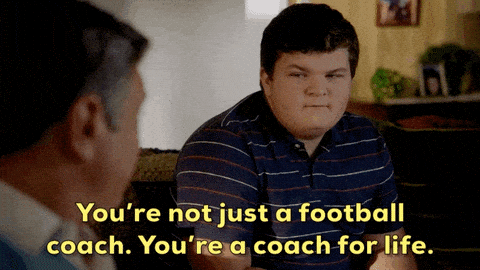
I do my best son
This highlights how "resulting" can mislead us into believing a good decision is bad just because it had a bad outcome.
To overcome this bias and better assess our decisions (unlike most sports pundits), we need to make a conscious effort.
This involves actively avoiding post-rationalization, where we justify a decision after knowing the outcome, and confirmation bias, where we favour information that supports our existing beliefs.
It requires a disciplined approach to evaluate the quality of a decision based on the information available at the time, not just the end result.
By understanding that good decisions can sometimes lead to bad outcomes, and vice versa, we can more accurately assess the quality of our decision-making and learn from each experience, regardless of the outcome.
And importantly, stop beating ourselves up. Someone really should check up on coach Pete.
But avoiding these biases is really really hard. Because they’re hard wired into us. That’s where you need a ‘Red Team’
CALLING IN THE REDS 🔬👩🔬👨🔬
The concept of a 'Red Team' comes from the FBI. They’re like the SWAT team for thinking, without guns. Wait, maybe they should be the ones with the guns 🤔
Anyway, they have the specific task of objectively assessing and critiquing the decisions made during an investigation.
This team operates independently from the investigators, providing a fresh, objective and unbiased perspective and is crucial in ensuring that the FBI continually learns and improves on the quality of its operational and investigative decision making.
Slightly higher stakes than Friday night poker or missing a plane.
For such teams to be effective, they need to adhere to certain principles, exemplified in the CUDOS model. Pens ready?
C (Communalism) - collective sharing of information and total transparency.
U (Universalism) - using the same standards for evaluating all information without bias.
D (Disinterestedness) - deliberately omitting knowledge of the outcome to avoid bias.
OS (Organised Scepticism) - objective, non-confrontational examination of what we really do and don’t know.
BTW, did you know that centuries ago, the Catholic church put this kind of thing into practice by hiring people to argue against sainthood during the canonization process – that’s where we get the phrase “devil’s advocate.” Fascinating huh?
HOW TO PUT THIS TO WORK 💡
OK Let’s get to the meat and potatoes. How do you put the absolute gems from “Thinking in Bets” into your marketing leadership work or business.
There’s a few things that you could look at doing immediately:
Embrace Probabilistic Thinking: Start team meetings with a discussion of probabilities for each marketing strategy, moving away from just 'good' or 'bad' labels.
Use 'Positive Expected Value' for Campaign Decisions: Before launching any campaign, calculate its expected value by weighing the potential rewards against the likelihood of success and the costs involved.
Apply the 10-10-10 Rule in Strategy Planning: For each major marketing decision, consider its potential impact in 10 weeks, 10 months, and 10 years, to balance short-term gains with long-term goals.
Create ‘Decision Diaries': Encourage team members to keep a record of decisions and outcomes, noting and focusing on the decision-making process rather than just the outcome.
Encourage Contrarian Views in Meetings: Actively seek out and listen to team members who have differing opinions on proposed strategies to avoid groupthink.
‘Red Team’ Reviews of Past Decisions Objectively: Regularly analyze both successful and unsuccessful campaigns, focusing on the decision-making process, not just the results.
Promote a Culture of Learning from Failures: Create an environment where team members feel safe to share what didn’t work, understanding that bad outcomes can arise from good decisions.
The above actions might not all be available to you, but they could be something really valuable to suggest to your wider team and boss. Maybe even suggest they read the book hey? 😉
You can pick yourself up a copy or send them here
So that about wraps it up for “Thinking in Bets”. A wonderful read from poker to super bowl play calls, making decisions is fraught with biases upfront and then after the fact.
Now you know how to make better decisions and how to think about the ones you’ve made. Hopefully you can forgive yourself one day for missing that flight.
Have you seen similar concepts to the ‘Red Team’ used in post-campaign analysis or retros?
Do you currently discuss the quality and approach to decision making in your marketing planning?
I’m keen to hear your thoughts. Simply hit reply to this email.
If you enjoyed this edition, please forward it to a friend who’s looking to level-up their marketing game - They’ll love you for it (and I will too) ⏭️ 💌
🧰 This toolbox overfloweth
Hey Gen: Terrifyingly easy to create AI avatars of yourself to convince your pals you now speak french. Amongst other things 🤯
Folio.la: Create interactive virtual guides to help your users discover your website 🌐
Meetlink.co: Linktree for your meetings 🤝
🗞️ Just the news that’s fit to print.
📺 There may still be hope for attention spans as TikTok tests 30-minute video uploads.
🥽 Now you can watch Kevin drone on about procurement policy in 3D with Teams.
❌ Elon needs Mr. Beast to succeed, so let’s not get too carried away about that view count
🤖 Adobe have clapped back at Channel Nine’s weak AF excuse for using AI to sexy-up a female politician
🧩 The Puzzler
Every week we throw in a tricky question, conundrum, riddle or noodle-scratcher to get you thinking.
Last week’s answer was ‘Your left hand’. Get it?
What goes up, but never comes down?
Hit reply with your answer. Looking forward to this weeks responses.
🙋 Memes and snips from the interwebs
We will never forget, possibly zoom’s greatest gift to humanity 🫡
🙋 Got a question? I might just have some answers.
Each week I'm here to answer any question you might have in the space of marketing, strategy, leadership, digital and everything in between.
Just hit 'reply' and let me know what's on your mind, and I'll share my answer with the community the very next week, including a special shout out (if you're into that, otherwise we can keep it anon) 🥸
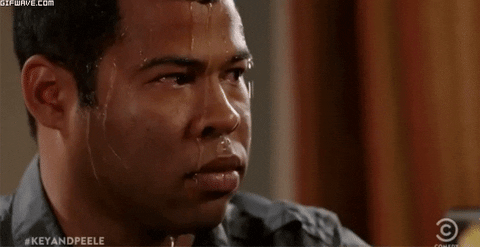
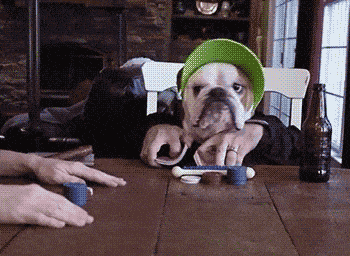
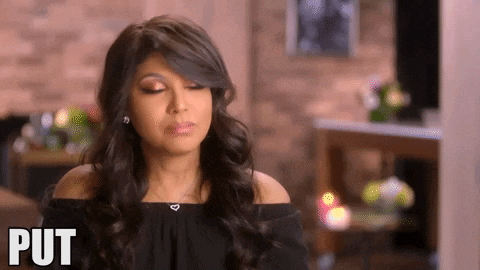
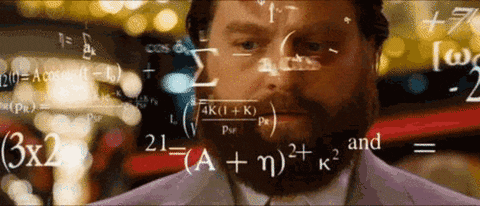
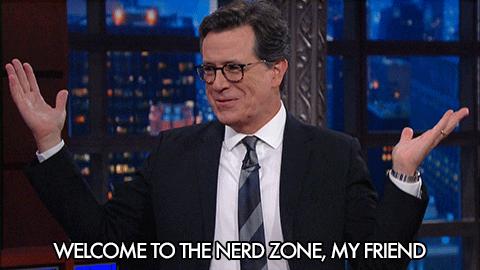






Reply